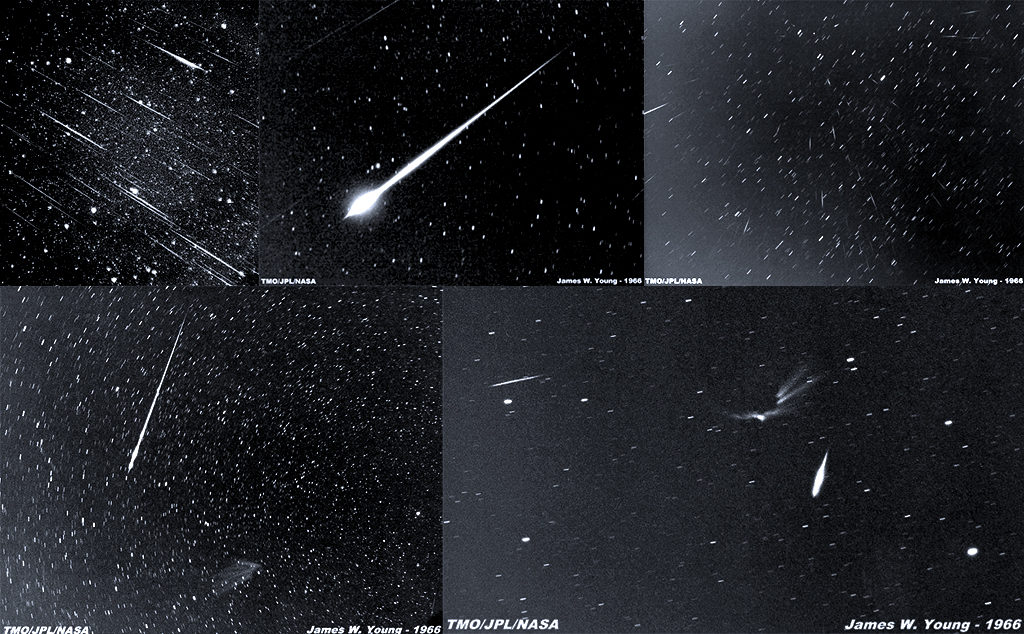3600 individual photographic orbits of meteor bodies and about 2000 visual meteor radiants with corresponding velocities were compiled and carefully studied in detail. 154 minor meteor streams were detected in the Solar System, their basic orbital and other data are given.
Firstly some remarkable shower and stream properties are established: examples of the large elliptic radiation areas with semi-major axes perpendicular to the Ecliptic; the existence of the Northern (N) , Southern (S) and Ecliptical (Q) branches of some streams; stream-antipodes and radiant-antipodes (symmetrically arranged relatively to the Ecliptic) with angular distances from the Ecliptic to 40-80°; а number of short-perihelion streams (q ~ 0.05-0.07 A.U.); some meteor streams perpendicular to the Ecliptic's plane.
There are also some unique meteor bodies with their orbits enclosed within the limits of the Earth's one, or having the clockwise and anticlockwise direction in two similar orbits.
Hyperbolic photographic velocities vh = 57-88 km /sec are treated as real ones according to the best radar and visual observations. А «bunch» of ecliptical streams, discovered in the USSR in 1950, is а complex of orbits of the mostly massive meteor particles of the Zodiacal Cloud. The stream evolution rate is comparatively high. The total complex of sporadic meteor bodies is not totally chaotic and accidental.
Introduction
This work published more than 50 years ago in Russian and relatively unknown among most Western scientists is now available online. With camera networks revealing the structure of minor streams in detail, it is useful to check recent finds with this detailed study published in 1966. To avoid transcription errors we reproduce the original Russian text.
Symbols And Terminology
The following notations and terms are used in this paper, epoch 1950.0 being used for all orbital data:
D Surface of the almost circular radiant area; D1, D2 The major and minor axes of the elliptic radiant area;ΔS The distance between the radiants along the arc of a great circle at the hemisphere;ΔThe value of the diurnal displacement of the radiant along the arc at the hemisphere, Δ > 0 being with a shift toward the east in the direction of increasing longitudes;n Number of observations;МЛMinor shower;МРSmall swarm;W Relative weight of the stream;N,S,Q Respectively, the northern, southern, and ecliptic stream;vt Orbital velocity of the Earth.For visual data:
R(α, δ)Position of the visual radiant;nR The number of single radiants R(α, δ);nh The observed hourly rate of meteors;v Atmospheric velocity of the meteors.For photographic data:
Rg(α, δ)Corrected geocentric radiant;εgElongation of the radiant Rg(α, δ) from the apex;v∞,vg,vh Respectively, pre-atmospheric, geocentric and heliocentric velocity;a, e, q, q', ω, Ω, i, πOrbital elements and heliocentric characteristics of the meteor stream;The Original Publication
The publication has been scanned and can be consulted in pdf-format: http://meteornews.org/pdf/meteors66-cr.pdf.
References
Terentjeva A. K. (1966). "Minor meteor streams". Results of researches of international geophysical projects: Meteor Investigations. N° 1, Publishing House "Nauka", pages 62 - 132, Moscow.




Comment: See also: New study: Threat of asteroid collision on Earth higher than previously thought